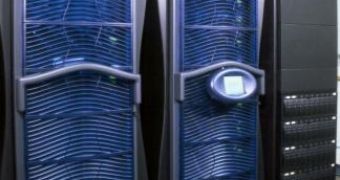Supercomputing comes from an age when desktop computer systems had just about no worth-mentioning processing power, yet they were priced like crazy. As it was much easier and cheaper to maintain a single supercomputer or mainframe than a huge number of smaller and much less performant systems, the high performance computing, HPC for short, developed very rapidly. As the individual performance of desktop and even mobile computing systems increased and their price tags got thinner, supercomputers went to data centers and specialized laboratories.
Typically, the HPC machines are used to simulate complex situations or to calculate equations that describe the real world. For example, a HPC system could be used to test the endurance of a car that hits a concrete wall before a prototype of that car is even built. Supercomputers are making their way slowly in the computing industry as their price tags are only a fraction of the original ones and their computing power is many times increased.
The shift from building supercomputers with common hardware parts and not with custom designed and build processors, memory modules and storage arrays as well as the increase in the know-how that resides behind the most successful designs, created a market for the small super computing machines. While the smaller versions of the computing behemoths that can be found in laboratories and governmental facilities can not hope to compete in the processing power department with their bigger and more expensive relatives, they cost only a fraction. For example, a supercomputer built from commonly available parts with let's say 100 processing units can be built for about $10,000 and such machines are ready for sale from companies like HP and Dell with a simple Web based order.
As the high performance computing systems are gaining more popularity because of their overall lower costs in terms of energy and response times as well as better resource management, we may find in the near future more and more machines with as many as 256 processors sitting just behind the corner and working just as well with a small company as it would with a multinational energy enterprise.

 14 DAY TRIAL //
14 DAY TRIAL //